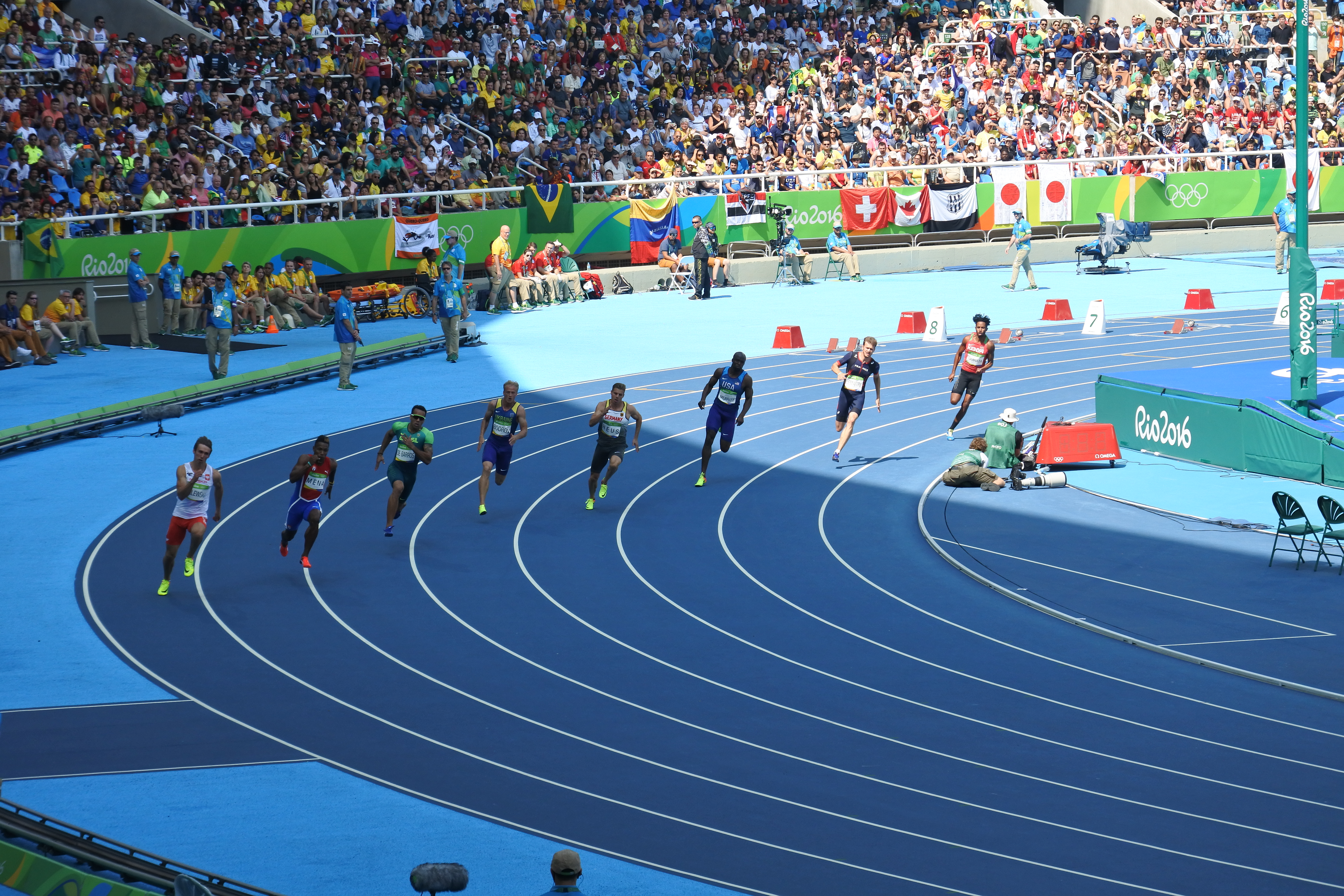One of the main sources of excitement at a Summer Olympics is watching sprinters break Olympic and world records. In this respect, the 2016 Rio Games was a bit of a bust. The only such record to be broken was by Wayde van Niekerk of South Africa in the Men's 400m final.
Disppointment was evidenced by Usain Bolt, who was apparently upset at his failure to set a new record in the Men's 200m event. (However, his overall medal count was some compensation, no doubt.)
What happened?
Perhaps part of the problem lies with the track itself. The blue carpet laid on the track at Rio was a material known as MondotrackWS ("World Series", not "Wicked Sh*t"). It is the third iteration of a special surface designed to heighten track performance, the first two being deployed at the Beijing and London Olympics.
In a few words, MondotrackWS works by pushing back against the runner's shoes as they contact it and by helping their feet to roll in a way that facilitates forward movement. Watch this video for the longer version.
In short, the track is designed to shave a few fractions of a second off running times versus other surfaces. In elite sprinting circles, that is often the difference between a good time and a new record. It seems, though, that the new version was not enough of an improvement over the old one to put many runners over the top.
Oh yeah, the runners! I guess that they did not get much faster either.
During the London games, I asked when it is a good thing to employ technologies like Mondotrack. Fairness is not the problem here since all athletes compete on the same surface and, presumably, realize the same advantage from it. (That is, unless we include athletes in previous events who did not run on such high-tech surfaces.)
Instead, the question is whether or not this use of technology conforms to the lusory attitude of the sport. In this specific case, the question could be framed as follows: To what extent should the technology employed in the sport determine athletes' performances in it?
Of course, sprinters need tracks that will allow them to compete safely and effectively. Yet, there seem to be some limits. What if Olympic organizers placed a giant fan behind the starting line that helped to blow the runners up the track a little faster? Track and field rules stipulate that "wind assistance" of over 2m/s means that no records may be officially set.
Again, the problem with wind assistance is not fairness, since every runner present gets about the same boost. Instead, the issue is that the wind is doing too much of the work, even though it may be a comparatively tiny amount.
I assume that the same reasoning would apply to the track itself.
What do you think?

(Courtesy of Ricardo Augusto/Wikimedia commons)